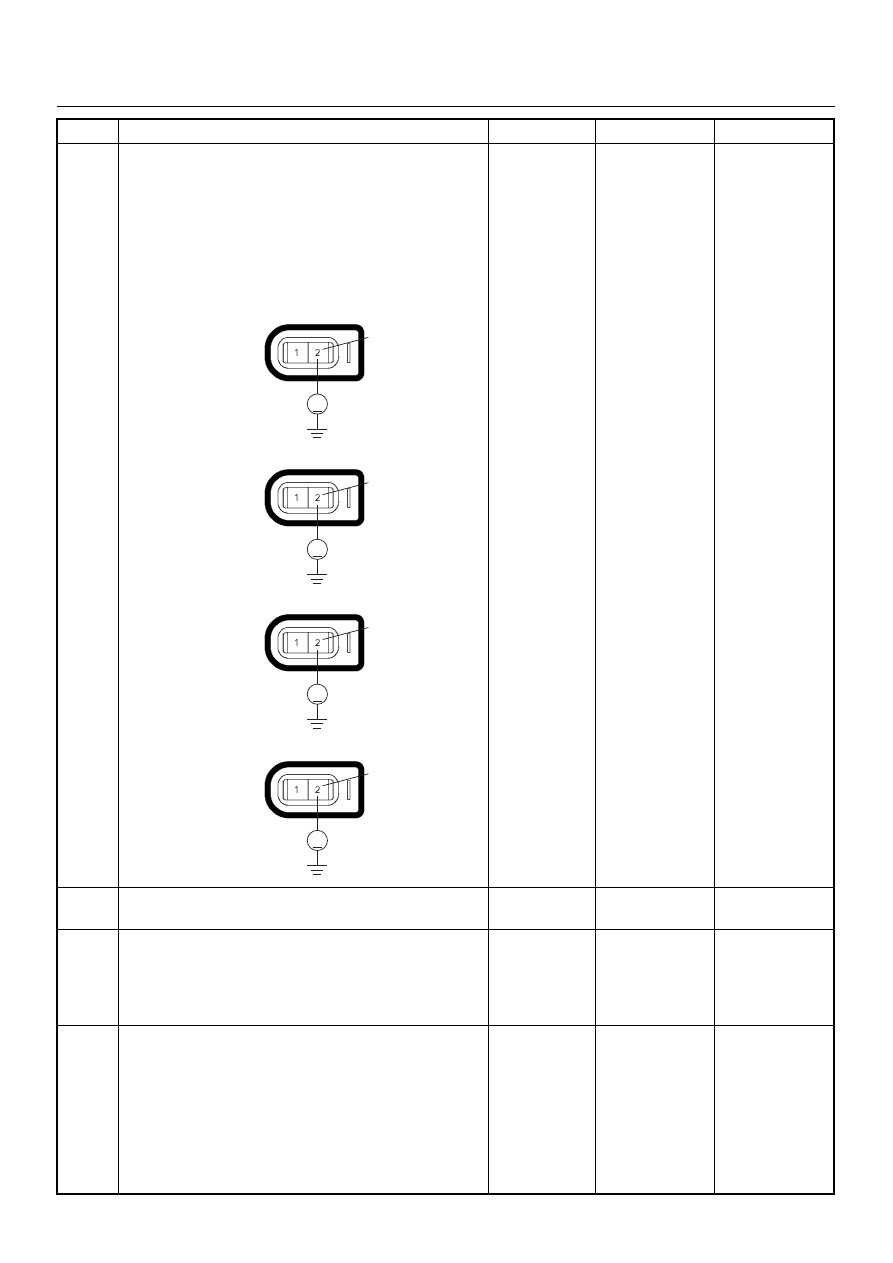Isuzu D-Max / Isuzu Rodeo (TFR/TFS). Manual - part 231

ENGINE DRIVEABILITY AND EMISSIONS
6E–165
10
Using the DVM and check the injector signal circuit.
1. Ignition “On”, engine “Off”.
2. Disconnect the injector connector for the affected
cylinder.
3. Check the circuit for short to battery voltage
circuit.
Was the DVM indicated battery voltage?
—
Repair faulty
harness and
verify repair
Go to Step 12
11
Replace the injector for the affected cylinder.
Was the problem solved?
—
Verify repair
Go to Step 12
12
Is the ECM programmed with the latest software
release?
If not, download the latest software to the ECM using
the “SPS (Service Programming System)”.
Was the problem solved?
—
Verify repair
Go to Step 13
13
Replace the ECM.
Is the action complete?
IMPORTANT: The replacement ECM must be
programmed. Refer to section of the Service
Programming System (SPS) in this manual.
Following ECM programming, the immobiliser system
(if equipped) must be linked to the ECM. Refer to
section 11 “Immobiliser System-ECM replacement” for
the ECM/Immobiliser linking procedure.
—
Verify repair
—
Step
Action
Value(s)
Yes
No
V
2
E-6
No.1 Cylinder
V
2
E-7
No.2 Cylinder
V
2
E-8
No.3 Cylinder
V
2
E-9
No.4 Cylinder